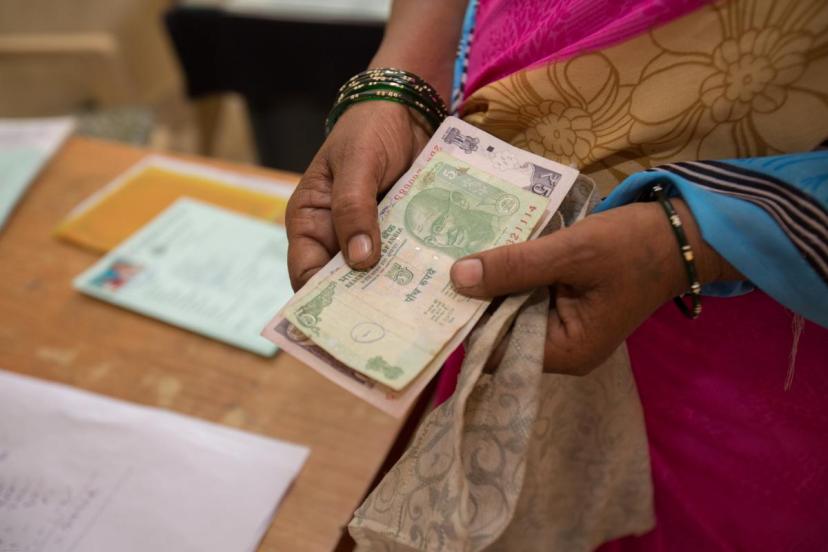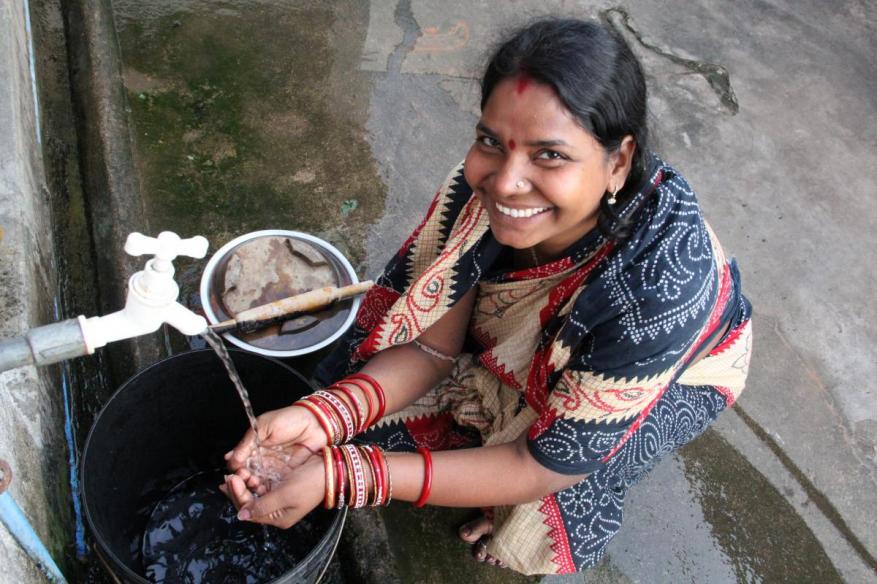On International Women's Day, research from Water.org shows how empowerment flows from financing improved water and sanitation access.
Published on: 05/03/2021

As we celebrate International Women's Day, we are pleased to see this analysis of Women's empowerment in WASH - produced by Water.org as it relates to financing in the sector. This is an important topic and aligns with IRC and its partners work to ensure no one is left behind. IRC has worked collaboratively with Water.org to strengthen finance for WASH at global, national and sub-national levels emphasising the need for inclusive and equitable financial systems, structures and processes.
International Women’s Day is taking place today [8 March] in the year-long shadow of the pandemic. It is hard to ignore the unequal burdens of COVID-19 and a year of lockdown life on women around the world – and they shouldn’t be ignored. Like other gendered patterns of inequality, they should be investigated with all of the tools and data at our disposal. We have been doing quite a lot of that investigation this past year in the field of water and sanitation, and we have come away with some good evidence about paths to empowerment.
To get through this and other crises, women need choice, agency, and access to resources in the public and private spheres. But in many countries, they are left more vulnerable than men by lesser access to economic, social and political resources alike. Water access is an area where these increased vulnerabilities are stark: among the 785 million people worldwide who lack access to safe water, women and girls are usually the ones who have to go out (sometimes very far out) and collect water, in between taking care of family members and other domestic tasks. For those without a toilet in their homes, finding a place to go can be another long and unsafe journey.
Situations like these leave women with less time and ability to prioritize their own health and wellbeing, their education, their work, and their roles in the community. The pandemic has exacerbated inequalities by deepening poverty, making scarce services scarcer, and increasing the domestic care burden. Shortfalls in water access also interfere with measures to prevent COVID-19’s spread – starting with measures as basic as handwashing.
Even a year in, it can still sometimes feel like the world is on pause. But there is no time to pause when life is rolling backwards for many women. At Water.org, the race is on to ensure that the wide-ranging impacts of improved water access will mitigate the harm of the water and COVID-19 crises together. Water.org is a global non-profit that helps people access safe water and sanitation through affordable financing, such as its WaterCredit small loans program.
WaterCredit has served over 30 million clients in 13 countries over the past 16 years and mobilized $2.3 billion in capital. In the summer of 2020, we began digging into the program’s data to understand the gendered impact of its financing model. The forward direction of this work has had an interesting effect on our perspective through the pandemic: while we must address the unequal burdens on women, the evidence suggests that we may have an opportunity to make an even greater impact through empowerment.

Water.org and its microfinance partners have seen it happen everywhere, even during the pandemic. In Brazil, a borrower used to share her neighbour’s facilities, but fearing exposure to COVID-19, she took out a loan for her own bathroom; now she can wash her hands and bathe in safety. In Bangladesh, another borrower has come to consider private latrines an urgent necessity for her community, especially to avoid the spread of COVID-19; she is working to motivate other women to install toilets in their households.
Stories like these shape our beliefs about the role of finance in ensuring widespread access to water and sanitation solutions, but we know more solid, quantitative evidence on the gendered impacts of access is needed. Fortunately, data is something that we have an abundance of, especially when it comes to female borrowers.
Women are Water.org’s primary base, making up 87% of WaterCredit borrowers. The program offers access to financial services for women who have no access to the traditional banking system. During the pandemic, women have continued to take out WaterCredit loans – nearly half a million between April and December 2020.
Water.org data show that women are more inclined than men to recognize the importance of improved water and sanitation access, especially during times of crisis, and that they are motivated to take out loans by the potential for time savings, better health and wellbeing, convenience, improved social status, and safety and security. The impact is both qualitatively different and quantitatively greater for women, given their biological needs and their role in households, workplaces and communities. Improved access leads to better health, cleanliness, and a sense of personal dignity and their increased feelings of safety and security can reduce stress and improve feelings of wellbeing.
Safety and security are particularly important motivations for women to seek water and sanitation microloans. And their motivations are well placed: around the world, we have documented borrowers’ improved safety and security as a result of lower exposure to gender-based violence and harassment while collecting water or seeking a toilet, better privacy – even reductions in encounters with snakes and other animals. A drop in gender-based violence goes hand-in-hand with increased recognition of women’s rights, and the respect they are afforded within their households and communities.

Another line of evidence shows that improved water access can result in significant time savings. As a result, more time can be spent on income generation, which can broaden women’s choices and increase their income and decision-making power within their household. This holds especially true when income generation combines with improved access to financial services.
There is much more to investigate here. For example, much of the evidence that time savings can have impacts on improved health, education and earning potential is qualitative. Our data – and the broader literature – are limited in terms of their ability to speak to the direct and indirect empowering effects of water access. Yet our findings suggest that the WaterCredit model has the potential to empower women economically, and a reduced burden of poor health can also better relationships within households and communities.
One study from Bangladesh shows that water and sanitation access had a significant indirect effect on women’s entrepreneurship development. This evident connection was mediated by the adoption of digital payments, which led to improved safety, privacy, comfort, convenience and time and cost savings. Such linkages need to be strengthened with empirical data for greater understanding of the enabling environment that can lead to women’s empowerment.
By better understanding these dynamics, lenders can deliberately amplify the impact of programs like WaterCredit for women. We can build the capacity of financial institutions to serve women, and we can purposely build women into the governance and delivery of water and sanitation programming, supporting them as role models and leaders in their communities.
This article was written by Meghann Jones, of The Impact Company. She wrote the article and conducted the study for Water.org. Meghann is an impact measurement specialist motivated by understanding the outcomes of investments in water access, rural community development, corporate supply-chains, MSMEs, and gender equality.
At IRC we have strong opinions and we value honest and frank discussion, so you won't be surprised to hear that not all the opinions on this site represent our official policy.